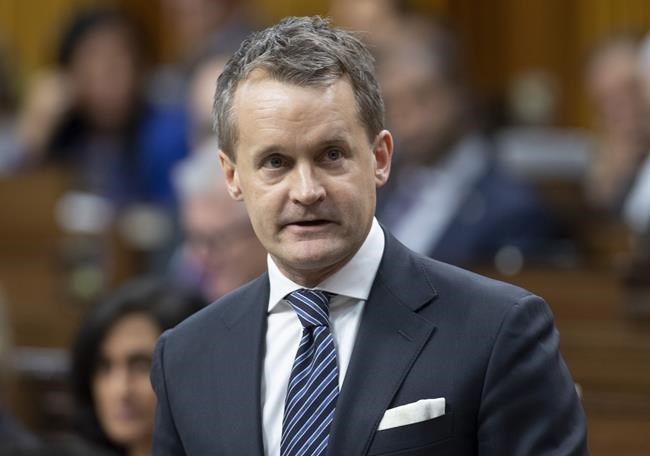The federal government has introduced a plan to greatly increase the use of hydrogen as a low-carbon fuel to help meet Canada's climate targets.
"We are announcing a big first step for hydrogen in Canada," said Natural Resources Minister Seamus O'Regan. "This strategy provides a challenge to all of us — to make Canada the top producer of low-carbon hydrogen to the world."
Hydrogen is considered a likely way to decarbonize industries that are hard to electrify, such as heavy transport or machinery.
It burns cleanly and can be produced using wind and solar power, so-called green hydrogen. It can also be made by stripping carbon from fossil fuels such as natural gas — after which the carbon is pumped underground — referred to as "blue" hydrogen.
O'Regan said the clean-burning fuel could provide up to 30 per cent of Canada's energy needs by 2050. He said it could be an industry worth $50 billion and could provide 350,000 jobs.
"Hydrogen could transform almost every sector of our economy."
The plan, released Wednesday, stretches out to 2050. It proposes that over the next five years regional hubs be created across the country in areas where hydrogen fits local needs or expertise in the fuel already exists.
The Edmonton area has access to abundant natural gas, successful facilities that store carbon underground and pipelines to move both the fuel and waste gas.
Ports across the country need lots of transportation fuel and could serve as hydrogen export terminals.
Transportation corridors from Montreal and Windsor to Detroit would have a high demand for fuel for both manufacturing and moving goods.
Hydro developments in British Columbia, Manitoba and Quebec could provide cheap, clean electricity for green hydrogen plants.
The strategy is to be funded by $1.5 billion announced last week as part of the government's climate change strategy.
The Alberta government, which was involved in creating the strategy, welcomed the federal announcement.
“Whether our hydrogen is produced from natural gas or other sources, we are in a strong position to supply the next wave of innovation in heating, transportation and electricity generation with Alberta-made clean-burning hydrogen," said a release from Dale Nally, Alberta's associate minister of natural gas electricity.
Some environmental groups criticized the plan's provision for creating hydrogen from natural gas.
"Hydrogen derived from fossil fuels should have been left out of the strategy, because leaving it in is a lifeline to an industry we know must be wound down as we decarbonize our economy," said Tom Green of the David Suzuki Foundation.
But O'Regan said all hydrogen sources will replace higher-carbon fuels, bringing down Canada's overall emissions.
"We are all about lowering emissions," he said. "We do not discriminate about industry here."
Simon Dyer at the Pembina Institute, a clean energy think-tank, said the government's hydrogen goals for either green or blue hydrogen will only be met if it sticks to its other climate initiatives, such as the Clean Fuel Standard and the carbon tax.
"The Clean Fuel Standard, methane regulations, and a steadily increasing carbon price, are necessary to attract investment in low-carbon and renewable hydrogen production," he said in a release.
Wednesday's document provided few spending details.
It says long-term research funding is needed in all aspects of hydrogen technology. Reliable infrastructure, including refuelling stations, supply and distribution systems, and storage facilities for both hydrogen and carbon dioxide, will also need support, the report says.
This report by The Canadian Press was first published Dec. 16, 2020.
— Follow Bob Weber on Twitter at @row1960
Bob Weber, The Canadian Press

